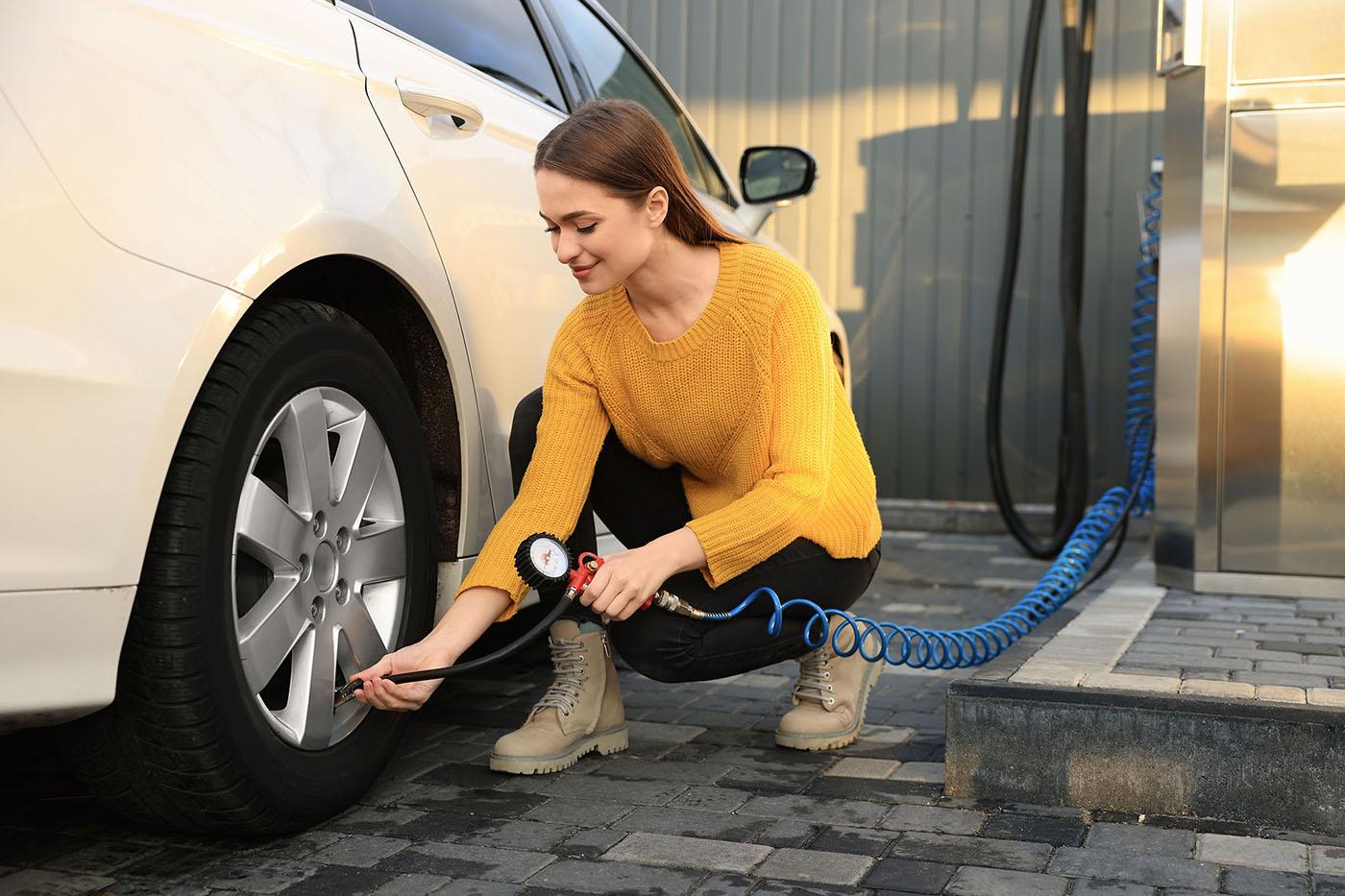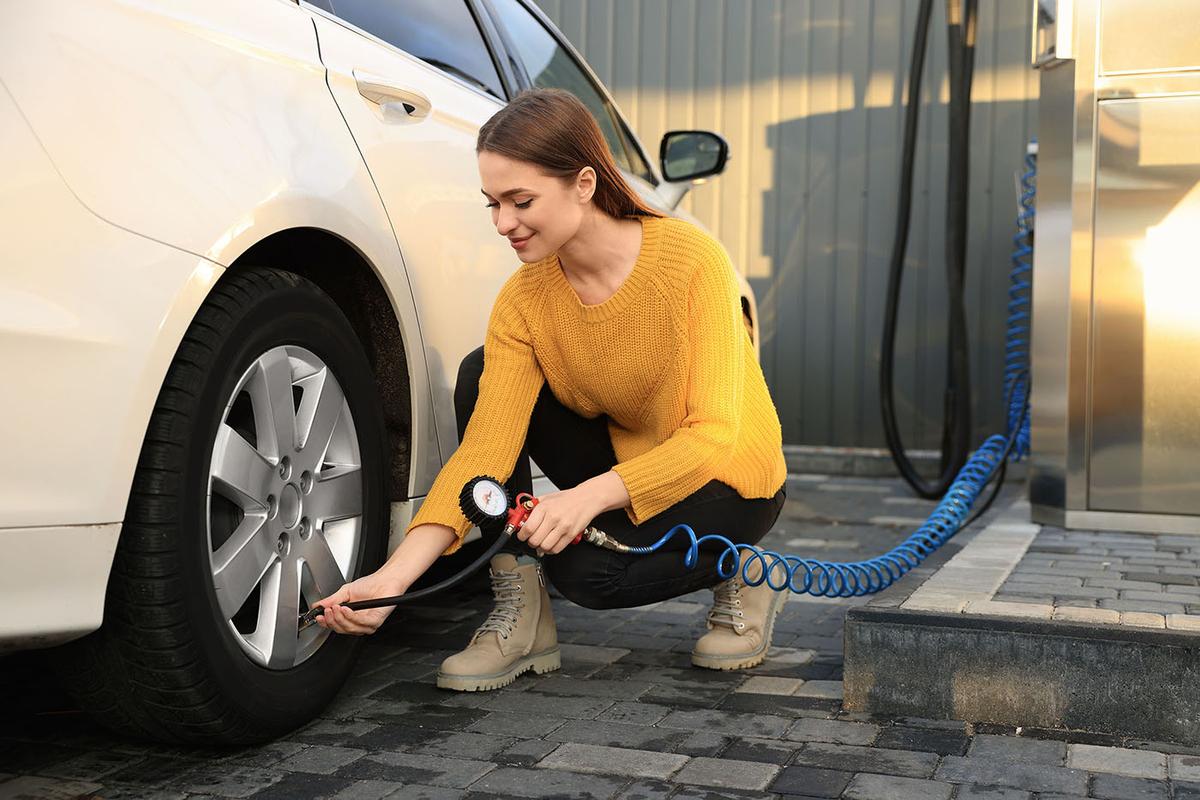

Most drivers don’t think about tire care until there’s a problem, but regular maintenance can save money, improve handling, and help you avoid safety risks. Learn the basics of tire upkeep and how to plan for replacements without paying upfront.
Key takeaways
Regular tire checks can prevent costly problems. Monitoring pressure, rotation, and alignment extends tire life and boosts vehicle performance.
Simple monthly habits go a long way. Checking your tire pressure takes just minutes and can improve fuel economy and safety.
Know the signs of tire wear before it’s too late. Tread depth, uneven wear, and sidewall damage signal it's time to replace your tires.
Snap Finance makes tire replacement more accessible. Lease-to-own financing can help you get new tires now and pay over time.
Thinking about your tires only when one goes flat can cost you money and compromise your safety. Proper tire care helps you get the most out of your investment, improves your car's handling, and can boost your fuel efficiency.
Taking a few minutes each month to care for your tires can save you hundreds of dollars and give you peace of mind on the road.
What are tire maintenance essentials? Keep reading to learn about simple checks you can do yourself, how to know when it's time for a new set of tires, and how you may be able to finance your new tires even if you have less-than-perfect credit.
Tire pressure, rotation, and alignment 101
Think of tire pressure, rotations, and alignments as the three pillars of tire health. Neglecting any one of them can lead to faster wear, poor performance, and potential safety hazards. The good news is that keeping up with them is simpler than you might think.
Checking your tire pressure
Properly inflated tires are crucial for safety, fuel economy, and longevity. When your tires don't have enough air, they can't hold their shape, causing them to wear out unevenly and quickly. Under-inflation is also a leading cause of tire failure.
Here’s how to check your tire pressure:
Find the right pressure: Look for a sticker on the driver's side doorjamb. This will tell you the recommended cold tire pressure (PSI) for your front and rear tires. Don't use the number printed on the tire itself; that's the maximum pressure the tire can hold, not the recommended level for your vehicle.
Use a quality gauge: You can buy a reliable tire pressure gauge for just a few dollars at any auto parts store. Digital gauges are easy to read, but a simple pen-style gauge works just as well.
Check when cold: For an accurate reading, check the pressure when your tires are "cold," meaning the car has been parked for at least three hours or driven less than a mile.
Add air if needed: Most gas stations have air compressors. Add air in short bursts, checking the pressure with your gauge until you reach the recommended PSI. If you overfill, you can press the small pin in the center of the valve stem to release some air.
Try to check your pressure at least once a month and before any long road trips. It's a five-minute task that makes a huge difference.
The importance of tire rotation
Your front and rear tires wear at different rates. The front tires handle most of the steering and carry more weight from the engine, so they typically wear down faster. A tire rotation is the process of moving each tire to a different position on the car to ensure they all wear evenly.
Even wear helps your tires last longer, saving you from having to buy a new set prematurely. It also keeps your vehicle's handling consistent. Most vehicle manufacturers recommend rotating your tires every 5,000 to 7,500 miles. A good habit is to have it done with every oil change.
Understanding wheel alignment
An alignment ensures your tires are pointing straight and making proper contact with the road. Potholes, curbs, and normal wear and tear can knock your wheels out of alignment. When this happens, you might notice your car pulling to one side or see your tires wearing down rapidly on one edge.
An alignment doesn't just save your tires; it also makes your car safer and easier to drive. If you feel your steering wheel vibrating or your car drifting to the left or right, it's time to have a professional check your alignment.
How to spot uneven wear and replace on time
Even with perfect maintenance, your tires will eventually wear out. Knowing what to look for can help you decide when it's time for a replacement, preventing a dangerous blowout or loss of traction in bad weather.
A simple way to check your tread depth is with a penny. This classic trick is easy and effective:
Take a penny and place it with Lincoln's head upside down in one of the tread grooves.
If you can see the top of Lincoln's head, your tread is worn down to 2/32 of an inch or less.
At this point, your tires are no longer safe and need to be replaced.
You should also look for signs of uneven wear. If you see that one side of the tire is more worn than the other, it could signal an alignment problem. Wear in the center of the tire often means it has been over-inflated, while wear on both outer edges suggests under-inflation. Bumps, bulges, or cracks in the sidewall are serious safety risks, and the tire should be replaced right away.
Don't forget to check the age of your tires. Most manufacturers recommend replacing tires every six to ten years, regardless of tread depth. Rubber degrades over time, becoming brittle and prone to failure. You can find your tire's manufacturing date on the sidewall – look for a four-digit code. For example, "2523" means the tire was made in the 25th week of 2023.
Interested in learning more? Read “What every driver should know about tire safety replacement: How to maintain your tires and when to replace them.”
Financing replacements without financial stress
A new set of tires can be a significant expense, often costing several hundred dollars or more. This can be a major challenge, especially if the need comes as a surprise. If paying upfront isn't an option, you have choices, even if you have less-than-perfect credit.
Many tire shops and service centers offer lease-to-own financing, which is typically more accessible than traditional financing.
Snap Finance is a leading provider of lease-to-own financing. Snap’s lease-to-own financing is simple and convenient and all credit types are welcome to apply.1
How does Snap Finance work?
Apply online or in-store. No credit is needed and it won't impact your FICO® score to apply.1 This makes it an option for a no credit work-from-home setup.
Get approved for up to $5,000 in lease-to-own financing.2 Use your approval amount to shop tire shops near you or online.
Pay later. Make payments over time. When you complete your payments and your lease agreement, the tires are yours.
Pay early and save. Snap’s Maximum-Term Plan is 12-18 months or you can choose an early ownership option to save on overall lease costs.3
Don't let financial worries force you to drive on unsafe tires. Ask the service advisor at your local tire shop about financing options, including Snap Finance.
Where to go for affordable maintenance
Finding a trustworthy and affordable shop for tire rotations, alignments, and replacements is key. You don't always have to go to a dealership, which can be more expensive. Independent auto repair shops and dedicated tire centers are excellent alternatives. Keep in mind that services are not leasable with Snap Finance.
Look for shops that offer clear pricing and have good customer reviews online. Many retailers offer lifetime rotation and balancing services when you purchase a set of tires from them. This one-time purchase can lead to long-term savings. Some shops also run seasonal promotions or offer discounts on alignment checks, so it pays to ask about current deals.
Building a relationship with a local mechanic you trust can be invaluable. A good technician will not only perform the necessary services but also help you spot potential issues before they become expensive problems.
Protect your investment and stay safe
Your tires are a critical investment in your safety and your vehicle’s performance. By dedicating just a few minutes each month to basic care – checking your pressure, looking for wear, and staying on top of rotations – you can extend the life of your tires.
When it's time for a new set, remember you have options. Snap Finance lease-to-own financing can help you get the tires you need without paying for it all upfront.
The advertised service is a lease‑to‑own agreement provided by Snap RTO LLC. Lease‑to‑own financing is not available to residents of Minnesota, New Jersey, and Wisconsin.
1 Not all applicants are approved. While no credit history is required, Snap obtains information from consumer reporting agencies in connection with applications, and your score with those agencies may be affected.
2 Approval amounts range from $300 to $5,000 and depend on underwriting qualification criteria.
3 The default payment plan is the Maximum-Term Plan, which includes 12- to 18-month renewable terms and is your highest cost option. To exercise an early ownership option, including any early buyout promotions, you must make all regular payments on time and ensure the required amount is paid within the applicable timeframe through the customer portal or by contacting Customer Care at 1-877-557-3769. Early buyout promotions may include a cost of lease above the merchandise price. For details and limitations, including relating to applicable early ownership options, refer to your lease agreement.